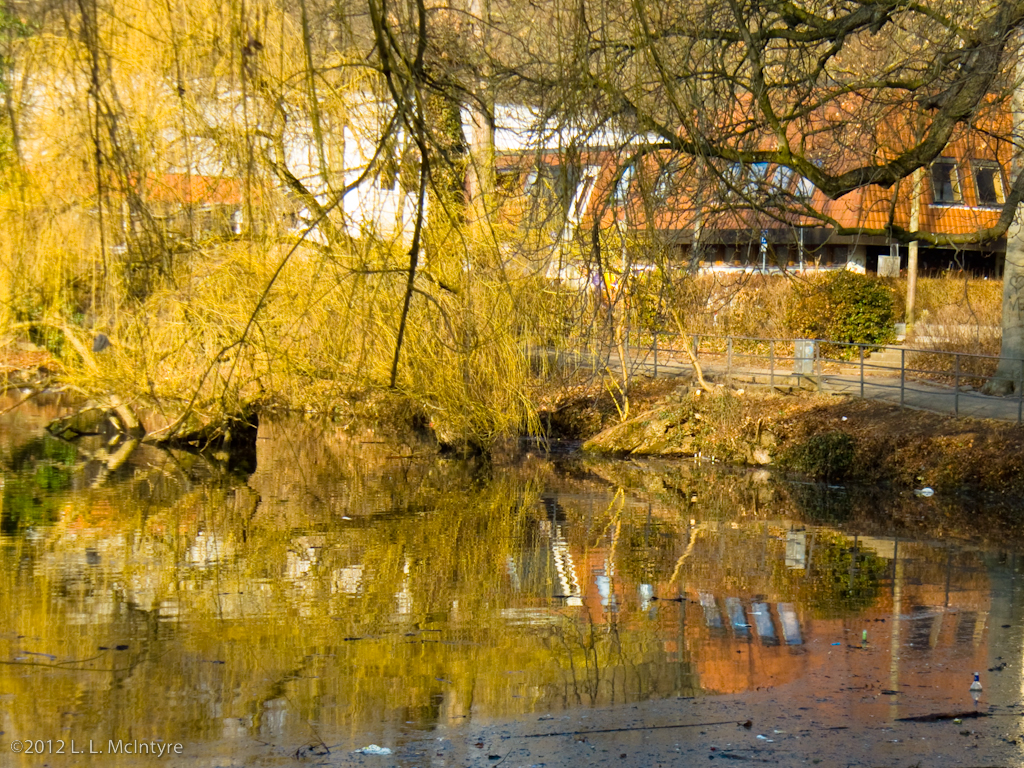There will be a short break from the blog posts this week, as Chris and I take a little vacation time. But I’ll leave you with a puzzle to ponder in the meantime. Consider this photo:
I snapped this photo last week – the water is the pond near the Tübingen train station that I talked about in this post last fall.
I call this an impossible reflection because there is a pretty clear reflection of the building in the water. However, that building is actually not all that close to the water’s edge. In fact, there are two separate, parallel paths for bikes and pedestrians, plus a row a hedges, sitting between the pond and that building. And in person that building is not all that tall. So, how the heck is that perfect reflection possible from that angle?
That’s a rhetorical question, as I don’t have an answer. The morning I spied this, I stood there for several minutes trying to figure out how this kind of optical illusion could be achieved. Just to be clear, it isn’t a trick photo, nor am I deliberately overlooking the obvious – i.e., that it’s not the building in the background that’s reflected in the photo. Trust me – there is no other building around there that looks like that.
Anyway, you can ponder the impossibility of it the rest of the week – regular blog posts will resume next Monday. 🙂
****
P.S. I’ll also leave you with a Broadway-style song that’s appropriate for today’s blog post title. Written by Rogers and Hammerstein for their TV version of Cinderella, it’s called — what else — Impossible.


it has to do with the physics of reflective light. This is a specular reflection I believe and it is said that “for specular reflection the angle at which the wave is incident on the surface equals the angle at which it is reflected. Mirrors exhibit specular reflection. So you just were at the same angle as the house was to the reflection. I think that’s it.
Kathy, that sounds good to me.
It’s Photoshopped. I can tell from the pixels.
I think Kathy’s got it. You’re far enough back that you’ve got a line of sight through the pond to the building. You can see all the other stuff also reflected; if you were closer the building would be hiding behind that, but from this angle it’s exposed.
Right?
Thanks, Kathy – that sounds plausible, but I have no clue what to say about the physics of reflective light. But your explanation, and Ashley’s refinement sounds good to me.
And no, it isn’t Photoshopped. 😉 Although doing that would have been easier than figuring out the properties of reflected light. 😉